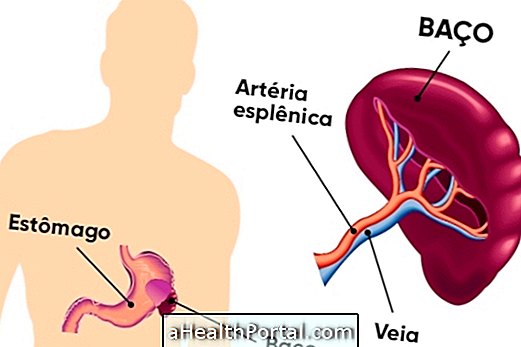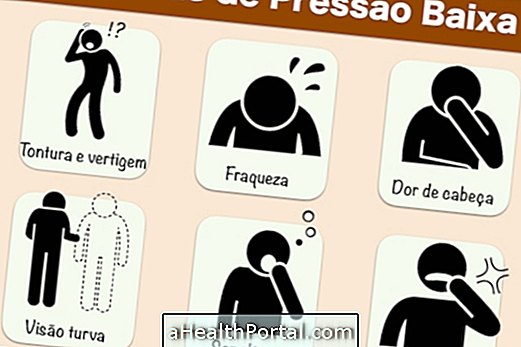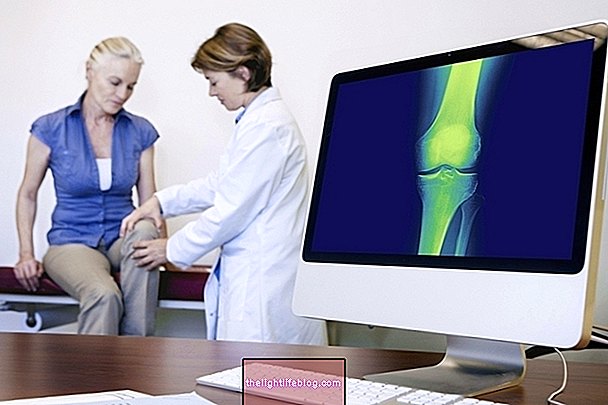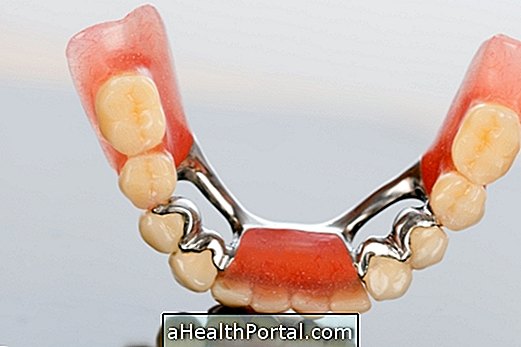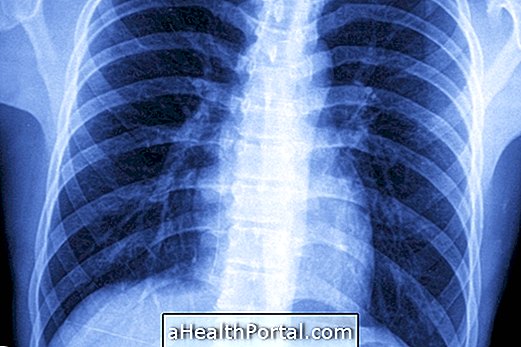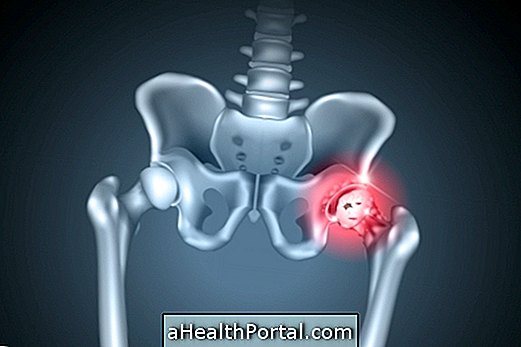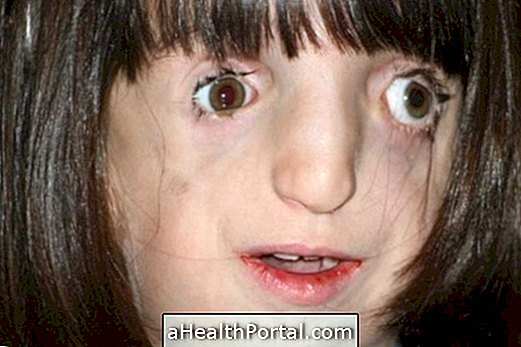The main symptom of umbilical hernia is the appearance of a protrusion in the region of the navel, especially when the child or adult forces in the abdominal region, such as when they are laughing, crying, coughing or using the toilet to evacuate. Find out what it is and why the hernia arises.
The greater the hernia, the greater the symptoms of pain and nausea, especially when lifting weights, forcing the belly muscles or standing for a long time.
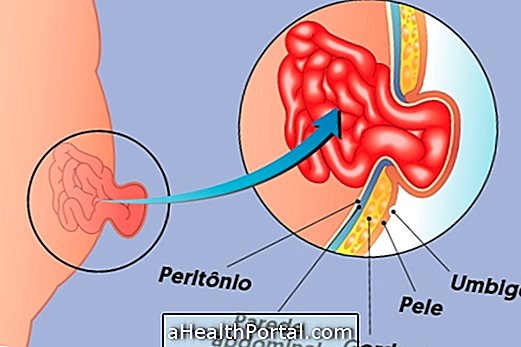
Main symptoms
In addition to the pain and protrusion in the navel region, other symptoms of umbilical hernia, such as nausea and vomiting, may be noted in the exertion and appearance of small lumps that are palpable when the person is standing but resembling when lying down.
Symptoms of umbilical hernia in the baby
In general, babies develop the same symptoms as adults, and the onset of the hernia arises mainly after the fall of the umbilical stump after birth. The hernia usually returns to normal on its own until the age of 5, however it is important that the child is evaluated by the pediatrician if he has an umbilical hernia.
Even without presenting pain symptoms, children should be referred to the pediatrician for evaluation of the severity of the problem, because when severe and untreated, the hernia can develop and become trapped in the umbilical scar, resulting in the incarcerated umbilical hernia, which can put the life of the baby at risk, being necessary the accomplishment of surgery with urgency.
Usually, the treatment of umbilical hernia in infants can be done by putting a tape or a strap to press the navel into the abdominal cavity. However, if the umbilical hernia is very large or does not disappear until age 5, your pediatrician may recommend having surgery to resolve the problem.
Umbilical hernia in pregnancy
Umbilical hernia in pregnancy is more common in women who had a hernia when they were children, as the increased pressure inside the pregnant woman's belly causes an opening in the abdominal muscle, which was already fragile, allowing the a small portion.
Usually, umbilical hernia is not dangerous to the baby, does not affect the health of the mother and does not hinder labor.
Depending on the size of the hernia, the surgeon general or abdominal surgeon may indicate the use of a brace during pregnancy and will evaluate the possibility of performing surgery for umbilical hernia repair after delivery or at the time of cesarean section.

When the umbilical hernia can complicate
Umbilical hernia is usually not a cause for concern, but if it gets stuck, a situation called the incarceration of the umbilical hernia, which occurs when the bowel gets stuck inside the hernia, and can no longer return into the abdomen, surgery must be performed immediately. Because of this, everyone with umbilical hernia should have surgery for their removal.
There is an urgent need to perform the operation because the part of the intestine that has been trapped may have impaired blood circulation, and there is death of the tissues, which need to be removed. This complication can affect people with large or small navels in the navel, and can not be predicted, and can happen in people who have hernia for 1 day or for many years.
The symptoms of which the umbilical hernia is imprisoned are intense pain in the umbigo with several hours of duration. The bowel may stop working and the abdomen may become very swollen. Nausea and vomiting are also common.
How is umbilical hernia surgery done?
Umbilical hernia surgery, also called herniorrhaphy, is the most effective form of treatment for umbilical hernia and is done with the aim of solving the problem and avoid complications such as intestinal infection or tissue death due to altered blood circulation in the uterus. region.
This type of surgery is simple, it can be done in children from 5 years of age and it is made available by SUS. Herniorrhaphy can be done by two methods:
- Videolaparoscopy, which is done under general anesthesia and 3 small holes are made in the abdomen to allow the entrance of a micro-camera and other medical instruments that are necessary to correct the situation;
- Cut in the abdomen, which is done under epidural anesthesia and a cut is made in the abdomen so that the hernia is pushed into the belly and then the abdominal wall is closed with stitches.
Usually during surgery, the doctor places a protective screen or net in place to prevent the hernia from recurring. Understand what umbilical hernia is and how recovery is after surgery.
Who is more likely to have
Some factors may favor the formation of umbilical hernias, such as a family history of hernias, cystic fibrosis, cryptorchidism, premature newborns, pregnancy, obesity, urethral disorders, hip development dysplasia and excessive physical effort. In addition, the appearance of umbilical hernia is more common in boys and in black children.
